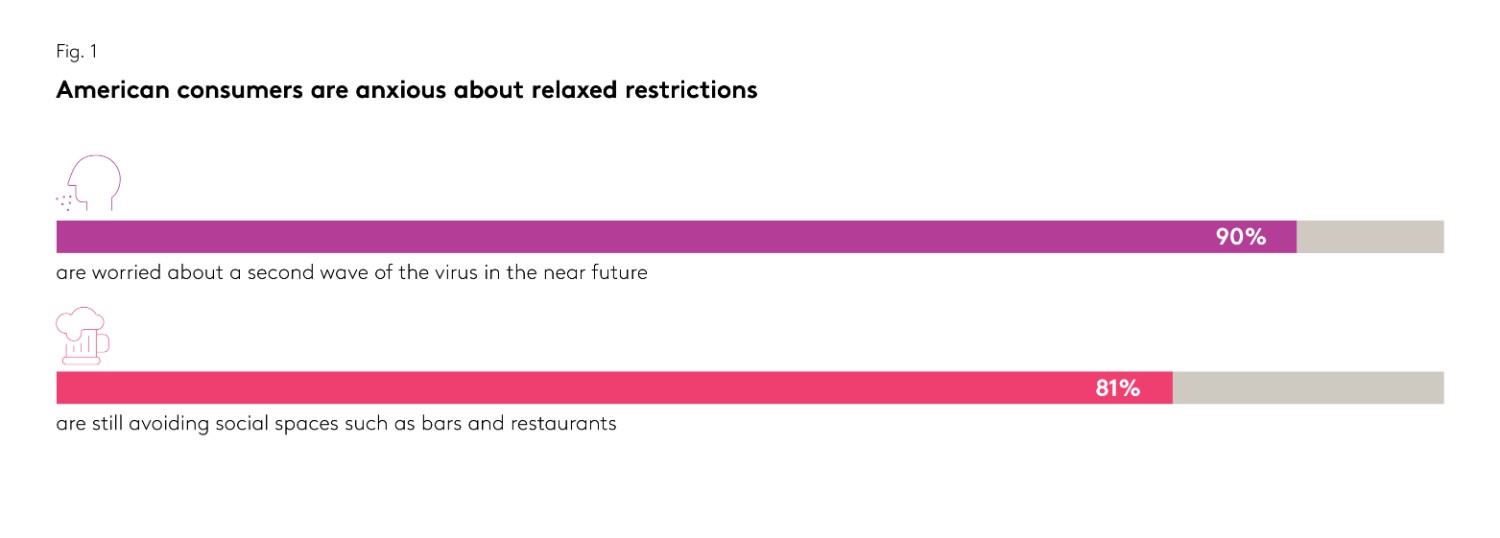Despite states continuing to relax restrictions, Kantar data shows that 81% of US consumers are still avoiding social spaces such as bars and restaurants. In comparison, more than 90% are worried about a second wave of the virus in the near future (see chart below). For alcohol beverage brands, these findings suggest that the consumer shift to off-premise alcohol consumption is not going to end anytime soon. This has implications for the 4th of July—a traditionally large drinking occasion—and beyond.

To help offset the decline in on-premise alcohol purchases, it will be vital for brands to better understand and cater to consumers’ changing at-home alcohol purchase habits and usage, including having insight into not only what consumers are drinking (which has implications for product innovation), but also how they are acquiring alcohol for at-home consumption.
Key findings from a combination of quantitative and virtual qualitative research from Kantar shed light on the subject and inform the path forward for alcohol brands.
According to Kantar data, nearly one-quarter of consumers buy more alcohol for at-home occasions than before the pandemic. And they are price-conscious. Consumers have already seen or expect to experience a financial impact in their household due to COVID-19, and more than half say they are paying more attention to prices than before the pandemic.
Although online shopping for alcohol beverages is still relatively low compared to other categories, the more people buy online in general, the more they will expect to purchase alcohol online as well.
In addition, Kantar has noted a movement toward ‘healthier vices’ during the pandemic, wherein consumers are adopting health-conscious ways to indulge. For alcohol consumption, this trend could mean further demand for low-alcohol or even no-alcohol options.
Adapting to consumer changes
Alcohol manufacturers, as well as distributors and retailers, need to be prepared.
Companies need to be agile to adjust to the changes in consumer behaviour and preferences, including having the ability to shift production lines at short notice to focus on changing consumer demand for specific brands and pack sizes, which will help limit out-of-stock issues.
Brands must also focus on innovation to tap into changing preferences (e.g., low/no-alcohol) and at-home occasions, which are more nuanced than in the past. This innovation could include an increased focus on package hygiene factors to easily facilitate “safe” sharing with family and neighbours – perhaps a can with anti-microbial properties. Or a fun alternative that feels like a special treat, but is simple to create – a cocktail that requires only one readily available ingredient as a mix-in to consume in the cul-de-sac or driveway with neighbors or to show off to friends on Zoom.
Two final ways to win with drinkers include:
- Continuing to keep sight of the value equation with an attractive price point commensurate to the offer.
- Meeting people where they are, by making sure brands are easy to find online.
Learn more
Contact Kantar today for more information on these findings and to learn how we can help you better understand your consumers during this unprecedented time.
